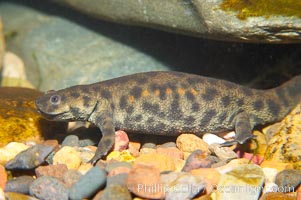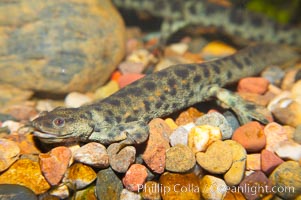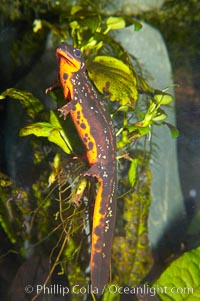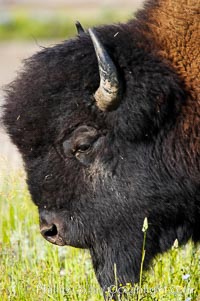
The bisons massive head is its most characteristic feature. Its forehead bulges because of its convex-shaped frontal bone. Its shoulder hump, dwindling bowlike to the haunches, is supported by unusually long spinal vertebrae. Over powerful neck and shoulder muscles grows a great shaggy coat of curly brown fur, and over the head, like an immense hood, grows a shock of black hair. Its forequarters are higher and much heavier than its haunches. A mature bull stands about 6 1/2 feet (2 meters) at the shoulder and weighs more than 2,000 pounds (900 kilograms). The bisons horns are short and black. In the male they are thick at the base and taper abruptly to sharp points as they curve outward and upward; the females horns are more slender.
Species: American bison, Bison bison
Location: Yellowstone National Park, Wyoming
Image ID: 13120
Species: American bison, Bison bison
Location: Yellowstone National Park, Wyoming
Image ID: 13120
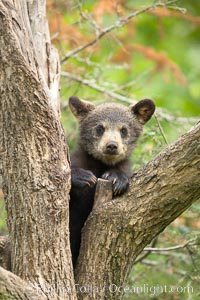
Black bear cub in a tree. Mother bears will often send their cubs up into the safety of a tree if larger bears (who might seek to injure the cubs) are nearby. Black bears have sharp claws and, in spite of their size, are expert tree climbers.
Species: American black bear, Ursus americanus
Location: Orr, Minnesota
Image ID: 18746
Species: American black bear, Ursus americanus
Location: Orr, Minnesota
Image ID: 18746
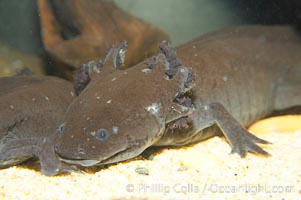
Axolotl. Axolotls are neotenic, which means they attain reproductive maturity while still in their larval form. Axolotls are extremely endangered in the wild and protected by law.
Species: Axolotl, Ambystoma mexicanum
Image ID: 13983
Species: Axolotl, Ambystoma mexicanum
Image ID: 13983
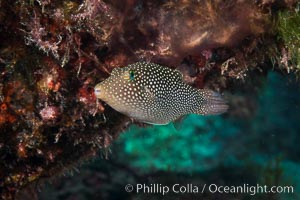
Spotted sharpnose puffer fish, Sea of Cortez, Baja California, Mexico, Canthigaster punctatissima.
Location: Isla San Diego, Baja California, Mexico
Image ID: 33546
Location: Isla San Diego, Baja California, Mexico
Image ID: 33546
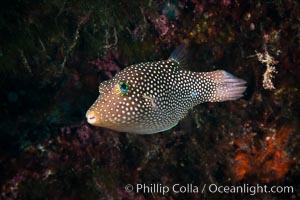
Spotted sharpnose puffer fish, Sea of Cortez, Baja California, Mexico, Canthigaster punctatissima.
Location: Isla San Diego, Baja California, Mexico
Image ID: 33547
Location: Isla San Diego, Baja California, Mexico
Image ID: 33547
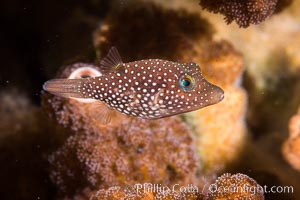
Spotted sharpnose puffer fish, Sea of Cortez, Baja California, Mexico, Canthigaster punctatissima.
Location: Isla San Francisquito, Baja California, Mexico
Image ID: 33642
Location: Isla San Francisquito, Baja California, Mexico
Image ID: 33642
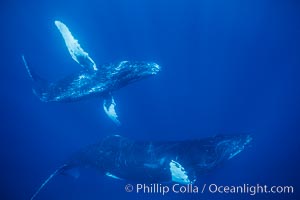
Humpback whales turning sharply in competitive group.
Species: Humpback whale, Megaptera novaeangliae
Location: Maui, Hawaii
Image ID: 04522
Species: Humpback whale, Megaptera novaeangliae
Location: Maui, Hawaii
Image ID: 04522
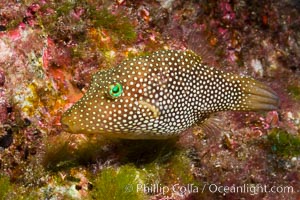
Spotted sharpnose puffer fish, Sea of Cortez, Baja California, Mexico.
Species: Spotted sharpnose puffer fish, Canthigaster punctatissima
Location: Sea of Cortez, Baja California, Mexico
Image ID: 27492
Species: Spotted sharpnose puffer fish, Canthigaster punctatissima
Location: Sea of Cortez, Baja California, Mexico
Image ID: 27492
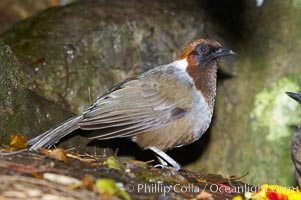
Red-tailed laughing thrush, native to Indochina.
Species: Red-tailed laughing thrush, Garrulax milnei sharpei
Image ID: 12757
Species: Red-tailed laughing thrush, Garrulax milnei sharpei
Image ID: 12757
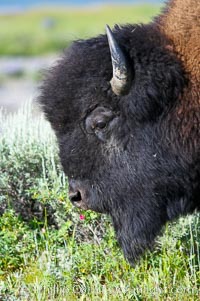
The bisons massive head is its most characteristic feature. Its forehead bulges because of its convex-shaped frontal bone. Its shoulder hump, dwindling bowlike to the haunches, is supported by unusually long spinal vertebrae. Over powerful neck and shoulder muscles grows a great shaggy coat of curly brown fur, and over the head, like an immense hood, grows a shock of black hair. Its forequarters are higher and much heavier than its haunches. A mature bull stands about 6 1/2 feet (2 meters) at the shoulder and weighs more than 2,000 pounds (900 kilograms). The bisons horns are short and black. In the male they are thick at the base and taper abruptly to sharp points as they curve outward and upward; the females horns are more slender.
Species: American bison, Bison bison
Location: Yellowstone National Park, Wyoming
Image ID: 13134
Species: American bison, Bison bison
Location: Yellowstone National Park, Wyoming
Image ID: 13134
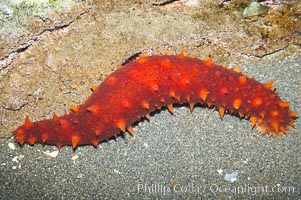
California sea cucumber. Sea cucumbers are related to sea stars and sea urchins. The sharp looking spines are soft to the touch and disappear into the skin when disturbed. If this visual defense doesnt work, the sea cucumber will expel its respiratory system. When this occurs in the wild it can regrow the lost organs.
Species: California sea cucumber, Parastichopus californicus
Image ID: 13732
Species: California sea cucumber, Parastichopus californicus
Image ID: 13732
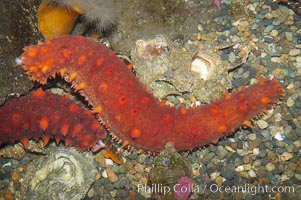
California sea cucumber. Sea cucumbers are related to sea stars and sea urchins. The sharp looking spines are soft to the touch and disappear into the skin when disturbed. If this visual defense doesnt work, the sea cucumber will expel its respiratory system. When this occurs in the wild it can regrow the lost organs.
Species: California sea cucumber, Parastichopus californicus
Image ID: 13733
Species: California sea cucumber, Parastichopus californicus
Image ID: 13733
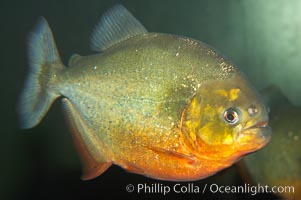
Red-bellied piranha. The piranhas teeth are so sharp that Amazonian Indians use them as knives. Each tooth has sawlike edges that allow the fish to slice through prey. The teeth are continually replaced throughout the piranhas life. Piranhas are illegal to import, sell or own in California.
Species: Red piranha, Pygocentrus nattereri
Image ID: 13956
Species: Red piranha, Pygocentrus nattereri
Image ID: 13956
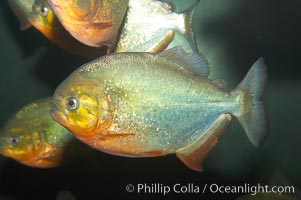
Red-bellied piranha. The piranhas teeth are so sharp that Amazonian Indians use them as knives. Each tooth has sawlike edges that allow the fish to slice through prey. The teeth are continually replaced throughout the piranhas life. Piranhas are illegal to import, sell or own in California.
Species: Red piranha, Pygocentrus nattereri
Image ID: 13957
Species: Red piranha, Pygocentrus nattereri
Image ID: 13957
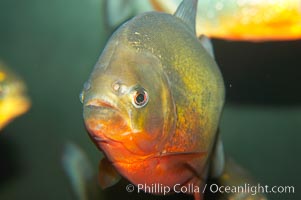
Red-bellied piranha. The piranhas teeth are so sharp that Amazonian Indians use them as knives. Each tooth has sawlike edges that allow the fish to slice through prey. The teeth are continually replaced throughout the piranhas life. Piranhas are illegal to import, sell or own in California.
Species: Red piranha, Pygocentrus nattereri
Image ID: 13958
Species: Red piranha, Pygocentrus nattereri
Image ID: 13958
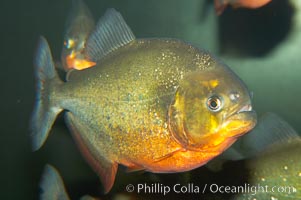
Red-bellied piranha. The piranhas teeth are so sharp that Amazonian Indians use them as knives. Each tooth has sawlike edges that allow the fish to slice through prey. The teeth are continually replaced throughout the piranhas life. Piranhas are illegal to import, sell or own in California.
Species: Red piranha, Pygocentrus nattereri
Image ID: 13959
Species: Red piranha, Pygocentrus nattereri
Image ID: 13959
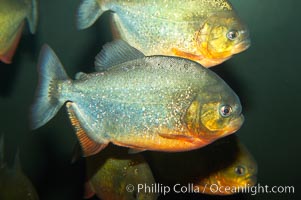
Red-bellied piranha. The piranhas teeth are so sharp that Amazonian Indians use them as knives. Each tooth has sawlike edges that allow the fish to slice through prey. The teeth are continually replaced throughout the piranhas life. Piranhas are illegal to import, sell or own in California.
Species: Red piranha, Pygocentrus nattereri
Image ID: 13960
Species: Red piranha, Pygocentrus nattereri
Image ID: 13960
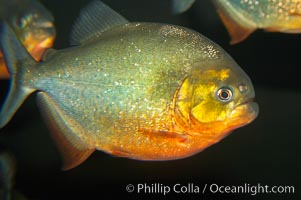
Red-bellied piranha. The piranhas teeth are so sharp that Amazonian Indians use them as knives. Each tooth has sawlike edges that allow the fish to slice through prey. The teeth are continually replaced throughout the piranhas life. Piranhas are illegal to import, sell or own in California.
Species: Red piranha, Pygocentrus nattereri
Image ID: 13961
Species: Red piranha, Pygocentrus nattereri
Image ID: 13961
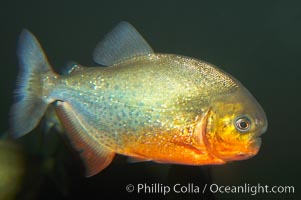
Red-bellied piranha. The piranhas teeth are so sharp that Amazonian Indians use them as knives. Each tooth has sawlike edges that allow the fish to slice through prey. The teeth are continually replaced throughout the piranhas life. Piranhas are illegal to import, sell or own in California.
Species: Red piranha, Pygocentrus nattereri
Image ID: 13962
Species: Red piranha, Pygocentrus nattereri
Image ID: 13962
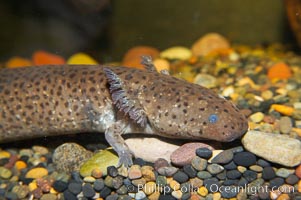
Lesser siren, a large amphibian with external gills, can also obtain oxygen by gulping air into its lungs, an adaptation that allows it to survive periods of drought. It is native to the southeastern United States.
Species: Lesser siren, Siren intermedia
Image ID: 13980
Species: Lesser siren, Siren intermedia
Image ID: 13980
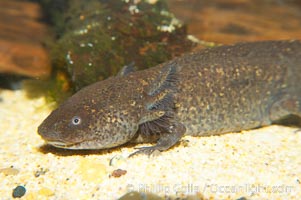
Lesser siren, a large amphibian with external gills, can also obtain oxygen by gulping air into its lungs, an adaptation that allows it to survive periods of drought. It is native to the southeastern United States.
Species: Lesser siren, Siren intermedia
Image ID: 13981
Species: Lesser siren, Siren intermedia
Image ID: 13981
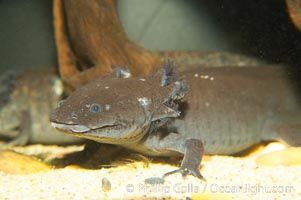
Axolotl. Axolotls are neotenic, which means they attain reproductive maturity while still in their larval form. Axolotls are extremely endangered in the wild and protected by law.
Species: Axolotl, Ambystoma mexicanum
Image ID: 13982
Species: Axolotl, Ambystoma mexicanum
Image ID: 13982
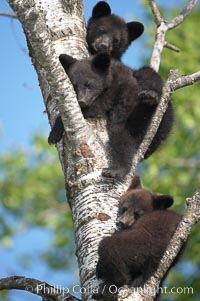
Black bear cub in a tree. Mother bears will often send their cubs up into the safety of a tree if larger bears (who might seek to injure the cubs) are nearby. Black bears have sharp claws and, in spite of their size, are expert tree climbers.
Species: American black bear, Ursus americanus
Location: Orr, Minnesota
Image ID: 18850
Species: American black bear, Ursus americanus
Location: Orr, Minnesota
Image ID: 18850
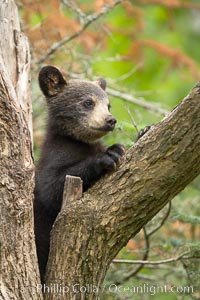
Black bear cub in a tree. Mother bears will often send their cubs up into the safety of a tree if larger bears (who might seek to injure the cubs) are nearby. Black bears have sharp claws and, in spite of their size, are expert tree climbers.
Species: American black bear, Ursus americanus
Location: Orr, Minnesota
Image ID: 18858
Species: American black bear, Ursus americanus
Location: Orr, Minnesota
Image ID: 18858
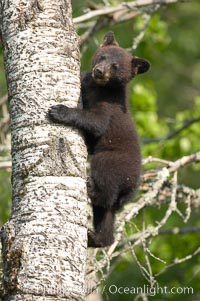
Black bear cub in a tree. Mother bears will often send their cubs up into the safety of a tree if larger bears (who might seek to injure the cubs) are nearby. Black bears have sharp claws and, in spite of their size, are expert tree climbers.
Species: American black bear, Ursus americanus
Location: Orr, Minnesota
Image ID: 18868
Species: American black bear, Ursus americanus
Location: Orr, Minnesota
Image ID: 18868
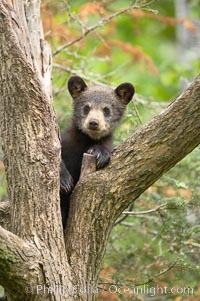
Black bear cub in a tree. Mother bears will often send their cubs up into the safety of a tree if larger bears (who might seek to injure the cubs) are nearby. Black bears have sharp claws and, in spite of their size, are expert tree climbers.
Species: American black bear, Ursus americanus
Location: Orr, Minnesota
Image ID: 18891
Species: American black bear, Ursus americanus
Location: Orr, Minnesota
Image ID: 18891
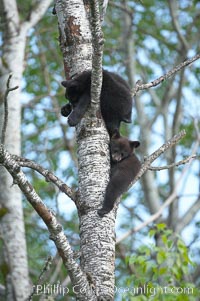
Black bear cub in a tree. Mother bears will often send their cubs up into the safety of a tree if larger bears (who might seek to injure the cubs) are nearby. Black bears have sharp claws and, in spite of their size, are expert tree climbers.
Species: American black bear, Ursus americanus
Location: Orr, Minnesota
Image ID: 18956
Species: American black bear, Ursus americanus
Location: Orr, Minnesota
Image ID: 18956
